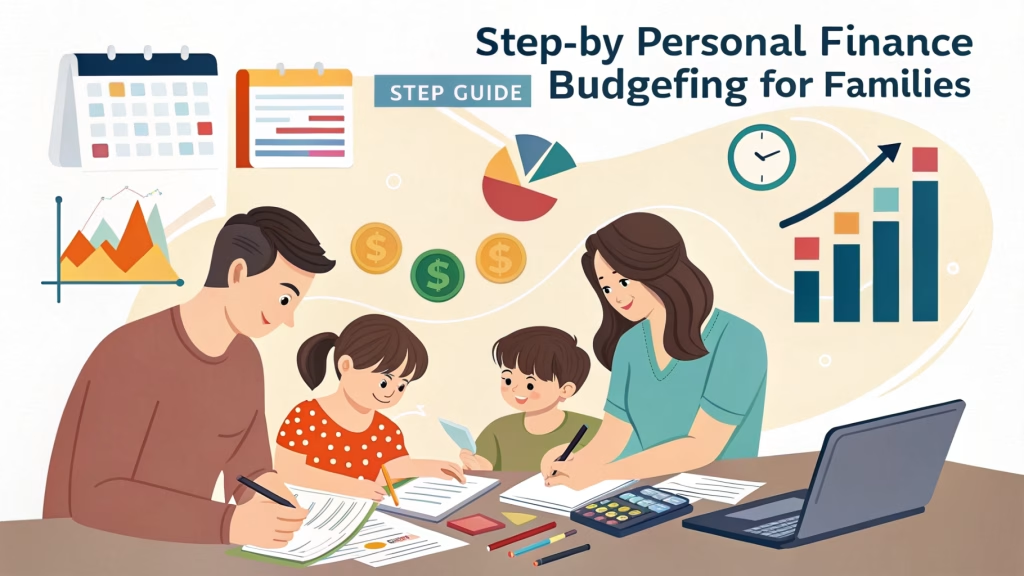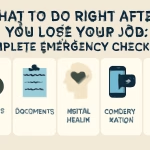A clear, easy budget cuts money stress, helps you save, and teaches kids how to use money. Follow these ten steps to build a family budget that works for your household. Each sentence is short, uses simple words, and keeps a friendly tone.
Why a Family Budget Matters
Many families feel money stress each month. Bills stack up. Kids need shoes. Cars need repairs. You often run out of money before the month ends. A solid budget stops debt and helps you save for surprises. It also shows your kids how to make smart choices with money. When everyone understands the plan, you all feel more secure and calm.
Step 1: List All Income
First, write down every dollar your family brings in each month. This includes:
- Paychecks after taxes
- Side gig earnings
- Child support or alimony
- Any other regular payments
Add them up. This number is the total you have to spend. If your income changes each month, use the average of the last three months.
Step 2: Track Every Expense
Next, record every dollar you spend for one month. Be honest and keep it simple:
- Groceries
- Rent or mortgage
- Utilities (electric, water, internet)
- Car costs (fuel, insurance, repairs)
- Health care costs
- Child care or school fees
- Entertainment and dining
- Small buys (coffee, snacks)
Use an app, spreadsheet, or notebook. The goal is to see where your money goes.
Step 3: Sort Expenses into Needs and Wants
Group your spending into two categories:
Needs = Must-haves you can’t skip
- Housing (rent or mortgage)
- Food and basic personal care
- Utilities and internet
- Insurance and medical costs
- Minimum debt payments
Wants = Nice-to-haves you can cut if needed
- Dining out and takeout
- Streaming services and cable
- Hobbies and trips
- New clothes beyond essentials
Sorting helps you see where you might cut back.
Step 4: Choose a Budgeting Method
Pick a simple plan and stick to it. Here are three easy methods:
- 50/30/20 Rule
- 50% of income to needs
- 30% to wants
- 20% to savings and debt paydown
- Zero-Based Budget
- Income minus expenses equals zero
- Give every dollar a job, even savings
- Envelope System
- Cash for each category in envelopes
- When an envelope is empty, no more spending
Choose one that fits your style. Try one for three months, then switch if needed.
Step 5: Build an Emergency Fund
Set aside a small amount each month for surprises. Aim for at least $500 to start. Then work up to three months’ worth of needs. This fund stops you from using credit when a car breaks or medical bills hit. Keep this money in a safe, easy-access account.
Step 6: Involve the Whole Family
Make budgeting a team effort.
- Hold a weekly money meeting.
- Show kids how you track spending.
- Give teens a simple allowance and set rules.
- Let kids help pick fun “wants” within limits.
Kids learn planning and choice. They see how money decisions affect everyone.
Step 7: Set Clear Goals
Give your budget purpose with goals:
- Short-term: Build your emergency fund or pay off one credit card.
- Mid-term: Save for a family trip or new appliance.
- Long-term: Fund college, pay off your home early, save for retirement.
Write your goals on a chart and review them each month. Celebrate small wins, like the first $100 saved or your first paid-off debt.
Step 8: Cut Costs and Boost Savings
If needs eat too much income, make small changes:
- Cook at home more often.
- Buy store-brand groceries.
- Cancel unused subscriptions.
- Shop secondhand for clothes and furniture.
- Bundle or switch to cheaper insurance plans.
To boost savings:
- Round down expenses to the next dollar.
- Automate transfers to savings on payday.
- Use cashback or rewards cards, but pay the full balance each month.
These small steps add up over time.
Step 9: Pay Down Debt Faster
With needs covered and a small savings buffer, focus extra money on debt. Two popular ways work well:
- Debt Snowball: Pay the smallest debt first, then roll that payment into your next debt.
- Debt Avalanche: Pay the debt with the highest interest rate first to save on interest.
Pick the method that keeps you motivated. The snowball method gives quick wins, while the avalanche method saves more money on interest.
Step 10: Review and Adjust Monthly
Every month, compare your plan to what you spent. Ask yourself:
- Did I stay within my categories?
- Did any costs change?
- Can I add more to savings or debt paydown?
Life changes: new job, baby, or a big repair. Adjust your plan to fit your new reality. A budget is a living tool, not a fixed rule.
Sample Monthly Budget Template
| Category | Amount |
|---|---|
| Total Income | $3,500 |
| Needs (50%) | $1,750 |
| Wants (30%) | $1,050 |
| Savings & Debt (20%) | $700 |
Needs Breakdown
- Rent/Mortgage: $900
- Utilities: $200
- Food: $400
- Insurance & Medical: $250
Wants Breakdown
- Dining Out: $300
- Streaming: $50
- Shopping: $200
- Hobbies/Activities: $500
Tips for Clear, Simple Writing
- Use short sentences—aim for ten words or fewer.
- Choose simple words—avoid three-syllable words unless needed.
- Keep active voice: “We plan” not “It is planned.”
- Avoid jargon—explain new terms in plain language.
- Keep a friendly tone—this is a guide, not a lecture.
Final Thoughts
A simple family budget brings peace of mind.
It shows everyone how money moves.
It helps you save, pay off debt, and reach goals.
It teaches kids good money habits.
Start today: track your income, list expenses, sort them, pick a method, save a little, involve your family, set goals, cut costs, pay debt, and review often. Over time, you’ll feel more control, less stress, and a brighter financial future.
Keep it simple, keep it consistent, and watch your family’s finances grow stronger every month.





